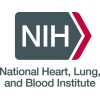
Study to Evaluate the Effects of Weight Loss on Airway Inflammation and Mechanics in Subjects With...
AsthmaCurrent research shows that obesity greatly increases the risk of developing asthma. Although the two conditions are clearly related, experts do not fully understand why they are linked. Some researchers believe that hormones released in the fat cells (adipokines) play a role. Others believe that excess weight pressing on the lungs triggers the hyperreactive response in the airways that is typical of asthma. The goal of the Asthma-Bariatric Surgery Study is to determine how weight loss affects lung function and various biological parameters. Bariatric (weight loss) surgery refers to the various surgical procedures performed to treat obesity. Specifically, this study is designed to answer the following questions: Does bariatric surgery help patients control their asthma? How much asthma control can be achieved through weight loss? How does weight loss influence lung function? Participants in this observational research study will be asked to complete study visits at enrollment, 1 month, 6 months, and 12 months. Questionnaires, pulmonary function tests, and blood samples will be required at each time point. This research study is observational only; it does not cover the cost of (or provide) bariatric surgery. Optional genetic and bronchoscopy substudies are included as well.

Association Between Abdominal Body Composition, Inflammation, and Risk for Cardiovascular Disease...
Cardiovascular DiseasesObesityObesity is a growing public health concern, with approximately 31% of Americans considered obese. The link between abdominal obesity and cardiovascular disease (CVD) has been well established, but the effect of distinct types of abdominal fat tissue on CVD risk is not well known. The rate of obesity and the distribution of abdominal fat differ with age, sex, and ethnicity. These differences may have important implications for determining ethnic-specific relationships between abdominal body composition (ABC), inflammation, and CVD events. This study will evaluate the association between measures of abdominal fat, CVD risk, and inflammation in terms of ethnicity-, sex-, and age-specific differences.

Genetic Markers of CHD Risk in Men and Women
Cardiovascular DiseasesCoronary Disease3 moreTo investigate the association of selected genetic markers of inflammation and endothelial activation with the occurrence of non-fatal acute myocardial infarction (MI).

Biochemical and Genetic Markers of Hypertension in Women
Cardiovascular DiseasesHypertension2 moreTo investigate biochemical and genetic markers of inflammation and endothelial dysfunction as determinants of hypertension.

Inflammatory Genomics in Human Carotid Artery Disease
Cardiovascular DiseasesAtherosclerosis2 moreTo investigate the relationship between genetic variation in genes for inflammation and carotid artery atherosclerosis.

Adipose Tissue Involvement in Alcohol-induced Liver Inflammation in Human
Alcoholic HepatitisAlcoholic CirrhosisThe histological characteristics of alcoholic liver disease (ALD) and non-alcoholic steatohepatitis (NASH) related to overweight and obesity suggest the presence of partly common physiopathological mechanisms. We reported that the ponderal overload was an independent risk factor of alcoholic cirrhosis. The adipose tissue was considered for a long time as a simple place of storage of fat. However, it is now recognized that the adipose tissue can secrete cytokines called ADIPOKINES. The adipose tissue can secrete others cytokines such as TNF-alpha, IL6, IL10 and IL1-Ra. Increase in the production of the leptin and TNF-alpha by the adipose tissue after alcohol administration in the rat, as well as the role of leptin in inflammation and liver fibrogenesis in the murine model of chemical hepatotoxicity strongly suggest that activation of adipocytes by alcohol can explain the strong correlation observed between the body mass index (BMI) and the severity of ethanol-induced liver injury. Conversely, it was suggested in a murine model that the reduction in adiponectin production would sensitize the liver with the toxicity of alcohol. The PPAR alpha and gamma are the receptors which play a role both in inflammation and glucide and lipid metabolism. Taking into account the inhibiting role of PPAR alpha on the proliferation of the hepatic stellate cells, responsible for the fibrosis, the PPAR could also be implied in the relation between the overweight and the hepatic fibrosis in the alcoholic.

Atherosclerosis in Rheumatoid Arthritis
AtherosclerosisCardiovascular Diseases4 moreTo test the theory that accelerated inflammation-promoted atherosclerosis occurs in patients with rheumatoid arthritis (RA).

Inflammation: Correlates and Prognosis in Framingham
Cardiovascular DiseasesHeart Diseases3 moreTo determine the relation between cardiovascular disease risk factors and systemic markers of vascular inflammation in the Framingham Study cohort.

Arterial Imaging of Inflammation and Resolution After Endovascular Surgery
Peripheral Arterial DiseaseClaudication6 moreThis study evaluates the local inflammatory and resolution response of patients undergoing peripheral vascular intervention like an angioplasty of the superficial femoral artery (SFA) or popliteal artery, or stenting of the iliac artery or SFA, through the use of Positron emission tomography-magnetic resonance imaging (PET/MRI). PET/MRI will be performed prior to intervention, one day and one week after intervention.

Inflammation, Fibrosis and Risk of Recurrence After Atrial Fibrillation Ablation
Atrial FibrillationAtrial InflammationFIBRO-RISK study aims to investigate the impact of inflammatory-mediated myocardial fibrosis on the risk of recurrence after successful ablation of atrial fibrillation. The level of systemic inflammation in the pre-ablation and immediate post-ablation period will be assessed on the basis of serum levels of inflammatory biomarkers (hs-CRP, matrix metalloproteases, interleukin-6), while the level of cardiac fibrosis will be determined based on MRI imaging associated with complex post-processing techniques for mapping myocardial fibrosis at the level of left atrium and left ventricle. At the same time, the amount of epicardial fat will serve as an indirect marker of localized inflammation and will be determined at different levels in the heart (surrounding left atrium, right atrium or the entire heart), while ventricular function will be assessed on the basis of serum levels of NT pro-BNP prior to the procedure. All these parameters will be investigated in patients with successful ablation of AF, who will be divided into 2 groups: group 1 - patients who develop AF recurrence at 1-year, and group 2 - patients with no recurrence of AF at 1-year. In all patients, the following biomarkers will be determined: serum levels of inflammatory biomarkers and NT-proBNP at 24 hours and 1 year post-procedure, the amount of myocardial fibrosis at the level of left atrium and left ventricle at baseline +/- 7 days and the amount of epicardial fat surrounding left atrium, right atrium and the entire heart at baseline +/- 7 days. The primary endpoint of the study will be represented by the rate of AF recurrence at 1-year post ablation, documented by either ECG or Holter monitoring. The secondary endpoints of the study will be: rate of re-hospitalization rate of survival without relapse rate of major adverse cardiovascular events (MACE rate, including cardiovascular death or stroke)
